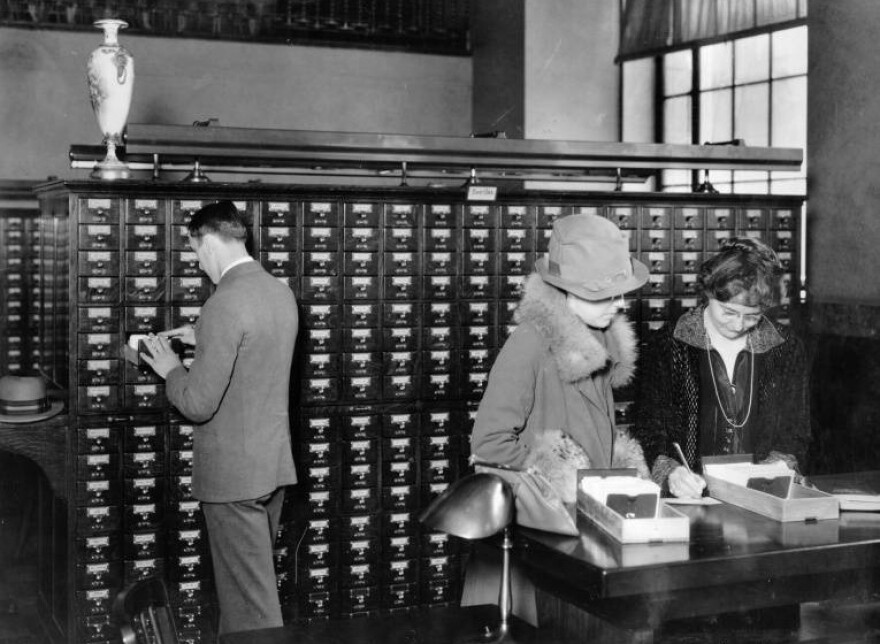It was almost “The Public Library of the City School District of the City of Cleveland.”
Fortunately, the Cleveland Public Library shortened its name just before opening the main branch on May 6, 1925. On Saturday, “the people’s university” marks the centennial of the Walker and Weeks-designed, Beaux-Arts style building.
"When you come into the main library, it has this grand feel," said , the library’s chief of collections and special projects. "People still come and take their wedding photos and their prom photos. We're a super popular destination. It looks like a castle. I say we have the greatest building in the city because when you come in here, you can leave with something."
Constructed at a cost of $5 million, the Roman architecture was meant to conform to the rest of Daniel Burnham's group plan for the city. Previously, the library had been housed in several spots, including one near Public Square and another in Playhouse Square.
“To build it, there was not a stick of wood used except for the flagpole,” Skrtic said. “It was sort of a modern marvel at the time. It was really fireproof and thought out better than any other library that had previously been designed across America.”
Skrtic has been with CPL for 35 years and is looking forward to the “Alice in Wonderland”-themed garden party happening 10 a.m.-4 p.m.

Saturday's celebration includes the debut of a historical marker and the opening of a shop in the Arcade selling library-related merchandise. Inside, Skrtic hopes visitors enjoy the Cleveland-themed Works Progress Administration murals created by artists William Sommer, Ora Coltman and Donald Duer Bayard. Elsewhere in the building, people can learn about genealogy classes and see the relaunched TechCentral, offering 3D printing, laser engravers and sound machines.
“In the past, you'd come in here, you'd grab a book and you'd leave,” he said. “Now you can come here and you can really create items. You can create content.”

The library system itself celebrated amid internal and external controversy. More than a half-century later, libraries across Ohio face uncertainty about state funding.
"We're known as the library of last resort," Skrtic said. "We have 11 million items. We keep all of this historical information. We keep the photographs. I think we just have to kind of keep doing what we've always done and we don't look at just what's happening in the politics of the day. We're here for every single person who wants to come here and have a really unique, wonderful experience."







